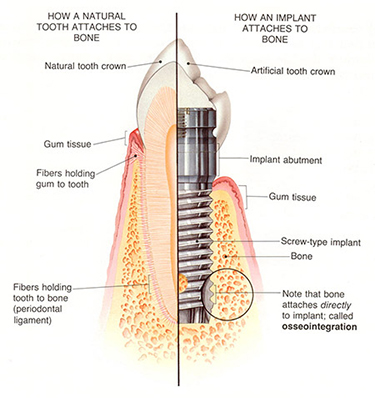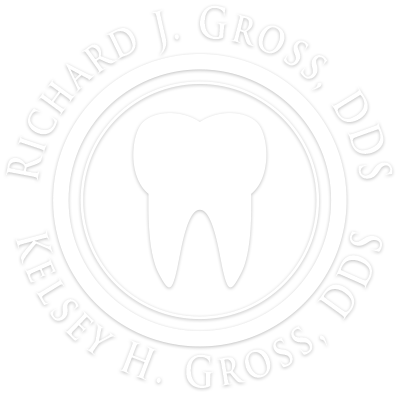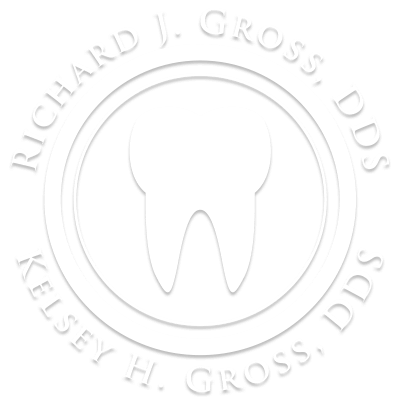Restorative Dentistry
Fillings, Bonding, Inlays and Onlays:

At our practice, we place composite, or white dental fillings. Composite can be used to fill teeth with cavities, to close spaces between teeth (known as bonding), to repair cracked or chipped teeth, or to restore worn teeth. We are a mercury-free practice, so we do not place silver/mercury-containing fillings (amalgams) at our office. When a filling gets really large, porcelain inlays and onlays are placed in lieu of composite fillings. The use of composite fillings and bonded porcelain inlays and onlays are great alternatives to silver fillings. Not only are they more esthetically pleasing, but they chemically bond to tooth structure, creating a strong connection between the tooth and the restoration.
Silver fillings have many drawbacks. Over time, the margins of the silver fillings will break down and cause leakage of bacteria and plaque into the tooth. Metal corrosion and fracture are also common problems with silver fillings. The expansion and contraction of the metal with age will eventually lead to the failure of the restoration.
There are many advantages to white composite fillings. The resins in certain types of white fillings contain fluoride, which aids in preventing tooth decay. The strong chemical bond between composite fillings or inlays and onlays creates a tight seal between the tooth and the restoration, preventing bacteria from penetrating into the tooth. Because these restorations are bonded in, they can be used to replace a large amount of tooth structure that is lost. The resins, composites, and porcelains also have a similar hardness to natural enamel, allowing the material to wear at the same rate that a natural tooth does.
Having silver fillings replaced with white fillings is an easy process. When silver fillings are replaced with direct composites (white fillings), it only takes one appointment. The silver filling is removed, along with any tooth decay that may be present. Then the tooth is treated with a conditioning gel and a bonding agent. Finally, the white filling is placed in layers and cured with a light. When larger silver fillings are being replaced, two appointments may be necessary. At the first appointment, the silver filling and any tooth decay will be removed. Then an impression will be taken of your teeth and a temporary restoration (inlay or onlay) will be cemented with temporary cement. The impression will be sent to our lab to create a beautiful and natural looking restoration. At your second appointment, the temporary will be removed, the tooth will be cleaned and conditioned, the porcelain inlay or onlay will be cemented using bonding cement, and then the tooth is light cured until the cement is hardened.
Gaps or spaces between teeth can easily be closed with cosmetic bonding procedures or laminate veneer procedures. We can also help improve the shape and color of your teeth with simple procedures such as these. Cosmetic bonding can usually be done with no need for local anesthetics! Call or e-mail us for a free cosmetic dental consultation to discuss your case for composite fillings, inlays and onlays, or composite bonding.
Implants:

Can you guess which tooth is a dental implant?
Replacing missing teeth is easier than ever. Instead of a bridge or partial denture, which can have a negative impact on remaining teeth, patients can enjoy dental implants that look and feel like natural teeth. Dental implants are made of titanium, which is a highly bio-compatible material. During the healing and maturation time of a few months the bone adheres to the titanium. The process is known as osseointegration and is responsible for the stability of the implant. Dental implants are safe, effective, and proven to last longer than bridges or partial dentures. They can replace a tooth or series of teeth anywhere in the mouth. Dental implants often result in a more functional and esthetic outcome.
Dental implants consist of three parts:
- Implant: A root-like titanium piece, which is implanted in the bone like a natural tooth root.
- Abutment: This is installed inside of the implant to provide the platform that holds the implant crown. The abutment is fabricated by our lab technicians, per Dr. Gross's instructions.
- Restoration (Crown or bridge): Restoration is the final piece of the puzzle. It is fabricated by Dr. Gross once the implant is integrated. It is the only part that is visible.

Phases of dental implant:
- Placement of the implant - Surgical phase done by the surgeon
- Osseointegration - Healing phase, which happens over a period of a few months
- Restorative phase - This is done by Dr. Gross once the implant(s) are osseointegrated. This may be a crown, bridge, or implant supported denture depending on the needs of the patient.
In cases where all of the teeth have been lost and dentures are needed, dental implants are used to retain bone and support the prosthesis so patients can function and smile with confidence. There are two options for these patients. The first option is the implant-supported removable denture and the second is a denture-like prosthesis that is affixed onto the implants. The patients with the latter option do not have to worry about what they eat, as the prosthesis is held firmly in place by the implants and is never removed by the patient. The implant-retained prosthesis should be cleaned and cared for just like natural teeth; as well as seeing the hygienist at least twice a year.
Crowns:
Dental crowns are commonly used to restore teeth with large fillings, cracks, decay, or damaged restorations with a strong custom-fabricated material. Crowns are also used on teeth that have had root canal therapy (endodontic therapy) to prevent breakage. Crowns can be made from metals (like gold), porcelain, or porcelain fused to metal. All porcelain crowns are very esthetic and incredibly strong, creating a natural looking tooth that is esthetically pleasing and durable. Gold crowns can still be used on back teeth for their great fit and malleable properties. Some benefits to crowns are that they can replace missing teeth when used as a bridge, support misshapen or broken teeth, prevent reoccurring tooth fracture, strengthen teeth, and look and function as a natural tooth would.
Many meticulous details are involved in the preparation and fabrication of a dental crown. Fitting a crown, often referred to as a "cap", requires two appointments at our office. The first appointment is for removing any tooth decay and old filling material, shaping and preparing the tooth, taking an impression, and making you a temporary crown. Our dental laboratory will use the impressions to fabricate a custom-made crown from porcelain, metal, or both. At your second appointment, your temporary crown will be removed and your lab-made permanent crown will be fitted and cemented onto your tooth. Dental crowns are intended to be a long-term solution and should last many years.
Bridges:
Dental bridges are one option to replace teeth following the loss of a tooth from tooth decay, periodontal disease (gum disease), or tooth fracture. A bridge (also known as fixed partial denture) replaces missing teeth by adding an artificial tooth that attaches to the natural teeth on either side of the space. The natural teeth that are adjacent to the space are the anchors of the bridge. Bridges are prepared and cemented down in a similar fashion to crowns. They will take two or three appointments to complete, and are intended to be permanent and non-removable. Missing teeth can and should be replaced, and a dental bridge is a great way to restore your smile. A dental bridge will improve your ability to eat, drink, chew, and speak normally, while also improving your smile esthetically. Dental bridges are a good alternative treatment for patients who are not eligible for dental implants. Bridges are composed of gold alloys, non-precious metal alloys, porcelain, or a combination of these materials. Dental bridges are a natural looking and effective long-term option to restore the form and function of your teeth.
Dentures and Partial Dentures, Implant-supported Dentures:
Dentures and partial dentures are removable prostheses that replace few or many missing teeth. They take expertise to fabricate properly and will usually take three or four appointments to complete. Complete dentures replace all teeth in the arch and partial dentures replace only some of the teeth, while some natural teeth remain.
If you currently wear a denture or partial denture that is loose or ill-fitting, there are many options to alter your prosthesis to get a better fit. The stability of your dentures can be increased by completing a reline on the denture, fabricating a new denture from a new impression, or getting dental implants to anchor the denture. A reline is a simple procedure where the denture is lined with a soft rubber-like material or relined with a hard acrylic, depending on your preference. A reline can be done in-office or can be sent out to our dental laboratory to complete. A reline can help your denture fit more snuggly and move less. An implant-supported denture will give the most stability of your denture, improve your bite, and prevent your denture from falling out. The implants will act as anchors to hold the denture in place, and can be fabricated to snap into the denture through various types of implant attachments. The end result is a great fitting, solid, and highly functional restoration that will give you new confidence in your smile.
If you or a family member is in need of new dentures, or wants to find out more about implants and implant supported dentures, do not hesitate to call our office for a consultation!

 Make an Appointment
Make an Appointment

